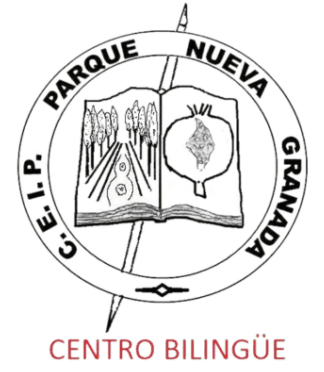In this unit you will learn about…
• the Universe, galaxies and astronomical objects.
• Our galaxy, the Mily Way and the Solar System.
• the Earth’s movements and its natural satellite, the Moon.
• biological rhythms of the Earth-> natural cycles of life.
THE UNIVERSE
The universe is made up of many astronomical objects and many galaxies. Our galaxy is called Milky Way, where the Solar System is located. There are eight planets in the Solar System:
-four planets are closest to the Sun (INNER PLANETS) that are smaller and they are mostly made up of rocks and metals. These are : Mercury, Venus, Earth and Mars.
– four planets furthest from the Sun (outer planets) that are bigger and they are mostly made up of gas. These are: Jupiter, Saturn, Uranus and Neptune.
All the planets orbit the Sun.
The Solar System also contains smaller astronomical objects, such as natural satellites, asteroids, meteorites and comets.
CHECK YOUR KNOWLEDGE!!
solar system 5º | Live Worksheets
Our Solar System worksheet | Live Worksheets
Use Search and discover! Use the Internet to find out more about a planet. Make a planet poster.
INNER AND OUTER PLANETS!
ASTRONOMICAL OBJECTS IN THE UNIVERSE.
- It is a star. It produces heat and light. THE SUN.
- Millions of stars, planets and other astronomical objects. GALAXY.
- Celestial body that orbit the Sun. PLANET.
- Astronomical objects that orbit a planet. NATURAL SATELLITE.
- Bodys of rocks smaller than a planet. ASTEROIDS.
ACTIVITY FOR THE WEEKEND 9 COTUBRE TRIVIA TIME
TRIVIA TIME español (red group)
SS5_and_earth_repres_study_presentation
Questions!!!
- How many planets are found in the Solar System?
- Name them.
- Write a characteristic of each one.
- Which the closest to the Earth? and the furthest?
- Draw your favourite planet.
OUR PLANET EARTH
Movements: rotation and revolution
Ejercicio de Earths Rotation and Revolution (liveworksheets.com)
Ejercicio de Rotation and revolution (liveworksheets.com)
ACTIVITIES IN THE NOTEBOOK
2. Copy and complete the sentences in your notebook.
a) The movement of the Earth on its axis is called…
b) The movement of the Earth around the Sun takes … and is called…
c) When we can’t see the Moon, this is called a…
INTERACTIVE ACTIVITIES
http://agrega2.red.es//repositorio/25012010/f1/es_2009091613_6547848/cm08_oa01_es/index.html
THE MOON: OUR NATURAL SATELLITE
LET’S SEARCH!
Facts about the Moon! – National Geographic Kids (natgeokids.com)
The Moon Facts For Kids | Information, Location, Summary & History (nineplanets.org)
Think, pair, share! Use Search and Discover! to find out more about the Moon. Work with classmate to answer the questions.
a) What is the Moon made up of?
b) How far is the Moon from Earth?
c) Does the moon orbit the Earth?
d) How long does the Moon take to orbit the Earth?
REPRESENTING THE EARTH: GLOBES, MAPS AND PLANS
There are different ways of representing the Earth:
1. A globeis a spherical, three-dimensional representation of the Earth’s.
2. A map is a representation of the Earth on paper or another flat surface.
-
Physical maps represent landforms and relief.
-
Political maps show the borders of countries, states, provinces and counties.
3. A plan is representation of a room or building on paper.
4. Distances on a map are much smaller than real distances. We can use a map’s scale to calculate the real distances it represents. There are two types of scale: numerical scalesand graphic scales.
5. Maps also have symbols. These are small drawings or lines which represent di erent elements of a landscape.
Globes and maps have imaginary lines called meridians and parallels. We use the point where these lines cross to accurately describe a location on the Earth’s surface.
Ejercicio de La representación de la Tierra (liveworksheets.com)
https://www.portaleducativo.net/segundo-basico/759/Representaciones-de-la-Tierra
ParalLels and meridians ACTIVITY
ACTIVITY FOR THE WEEKEND (22/10/19)
http://recursostic.educacion.es/primaria/alquimia/web/b/03/animaciones/a_fb25_00.html
EVALUATION- GOOGLE FORM
https://forms.gle/LgtoExWA62fPBJoo9
exam practice!
https://www.cerebriti.com/juegos-de-geografia/latitud-y-longitud–localiza-sabiendo-estos-datos-
Ejercicio de Parallels and meridians (liveworksheets.com)
PROJECT TIME! «INFLUENCIA DE LAS FASES DE LA LUNA EN LA SIEMBRA Y CRECIMIENTO DE LAS PLANTAS»
https://www.youtube.com/watch?v=t6MCtB752AE
THE MOON; IT IS A NATURALSATELLITE THAT ORBITS AROUND THE EARTH
CALENDARIO LUNAR NOVIEMBRE
¿En qué fase lunar estaríamos el 13 de Noviembre?
¿Cuándo habrá luna nueva? ¿y luna llena?
¿Cuándo tendremos que volver a plantar ajos si queremos tener evidencias de nuestras hipótesis?
CHALLENGE: OUR FINAL PRODUCT!
SOWING AND GARDENING
Vegetable seeds: sowing / RHS Gardening
-
What is sowing?
-
When is more appropiate to plant seeds?
-
When is the time to collect fruits and vegetables?
-
Research the time to plant different vegatables:









Maestra. Sobre que hora subes las preguntas
right now! 🙂
Teacher where are the cuestions
Teacher where are the cuestions???
Maestra, cuando me meto en los deberes me dice que no es compatible
teacher yo y houssam hemos hecho los tres ejercicios
Theacher irene he hecho la tarea de ciencias
Teacher ya he visto el video pero no estoy seguro de cual es la actividad que hay que hacer
antonio ya ha hecho todo
Teacher ya he hecho los deberes eran muy fáciles
Hola seño.
He visto el vídeo de Solar system y he hecho las actividades.
Ha sido muy interesante.
Hola seño soi Aminata mea gustado mucho pero no e podido a ver la ficha la copiar i el martes te lo enseñaré perdón porla molestias 🥰🥰
Hello ticher
This planet is Mercury.
It is the first planet of the Solar Sistem.
It is inner planet made of rock.
It is small , it is grey.
It has got craters.
It is 58 millons far from the Sun.
This planet is jupiter .
It is the fifth planet of the Solar System.
It a outer planet made of gas.
It is big , it is red, orange, brown and grey.
It has got satellites.
It is 778,5 mk for from the Sun.
1. THIS PLANET IS SATURN.
2. IT IS THE SIXTH PLANET OF THE SOLAR SYSTEM.
3. IS A OUTER PLANET
4. MADE OF GAS.
5. IT IS BIG.
6. IT IS YELLOW.
7. IT HAS GOT RINGS.
8. IT IS FAR FROM THE SUN.